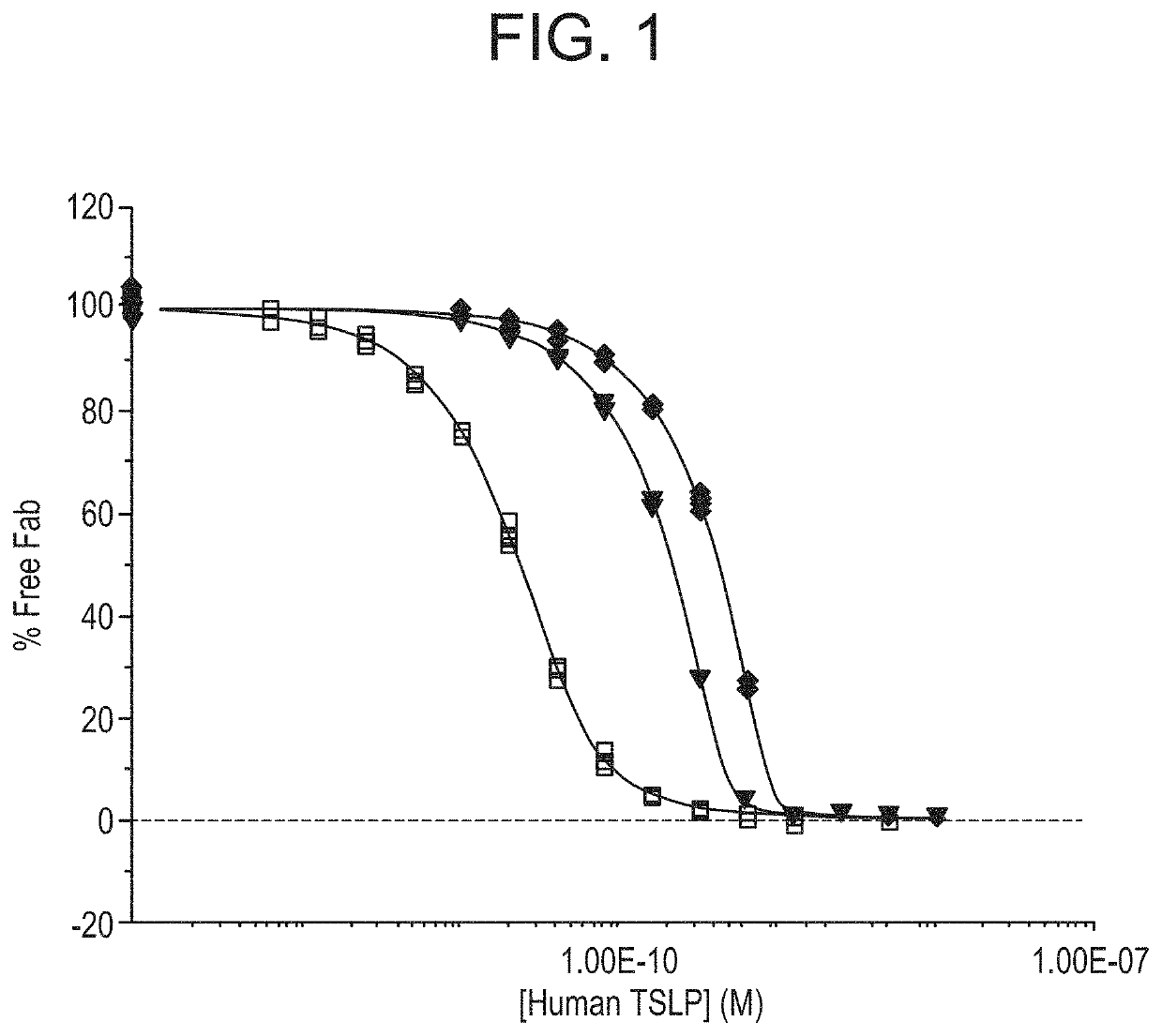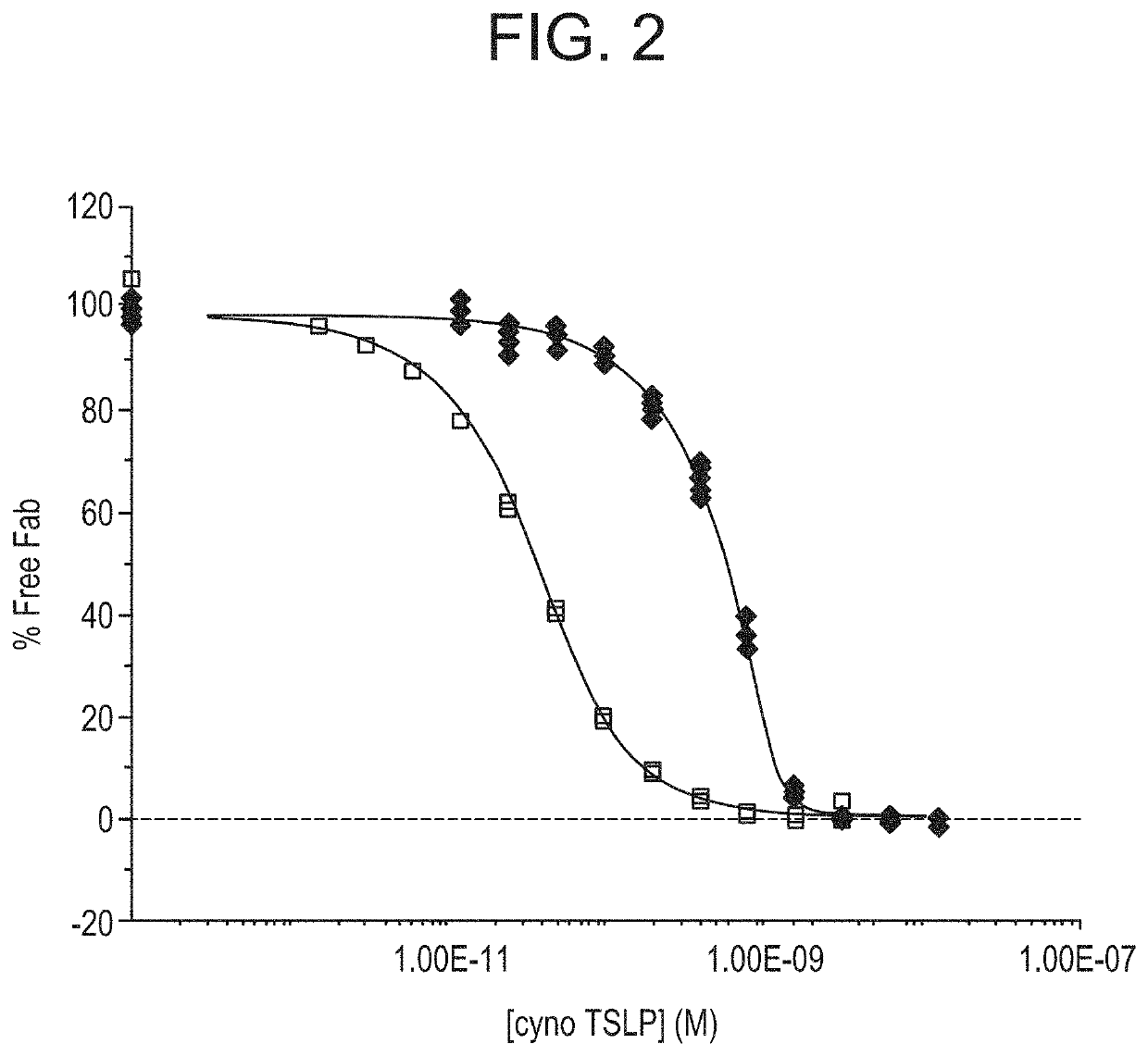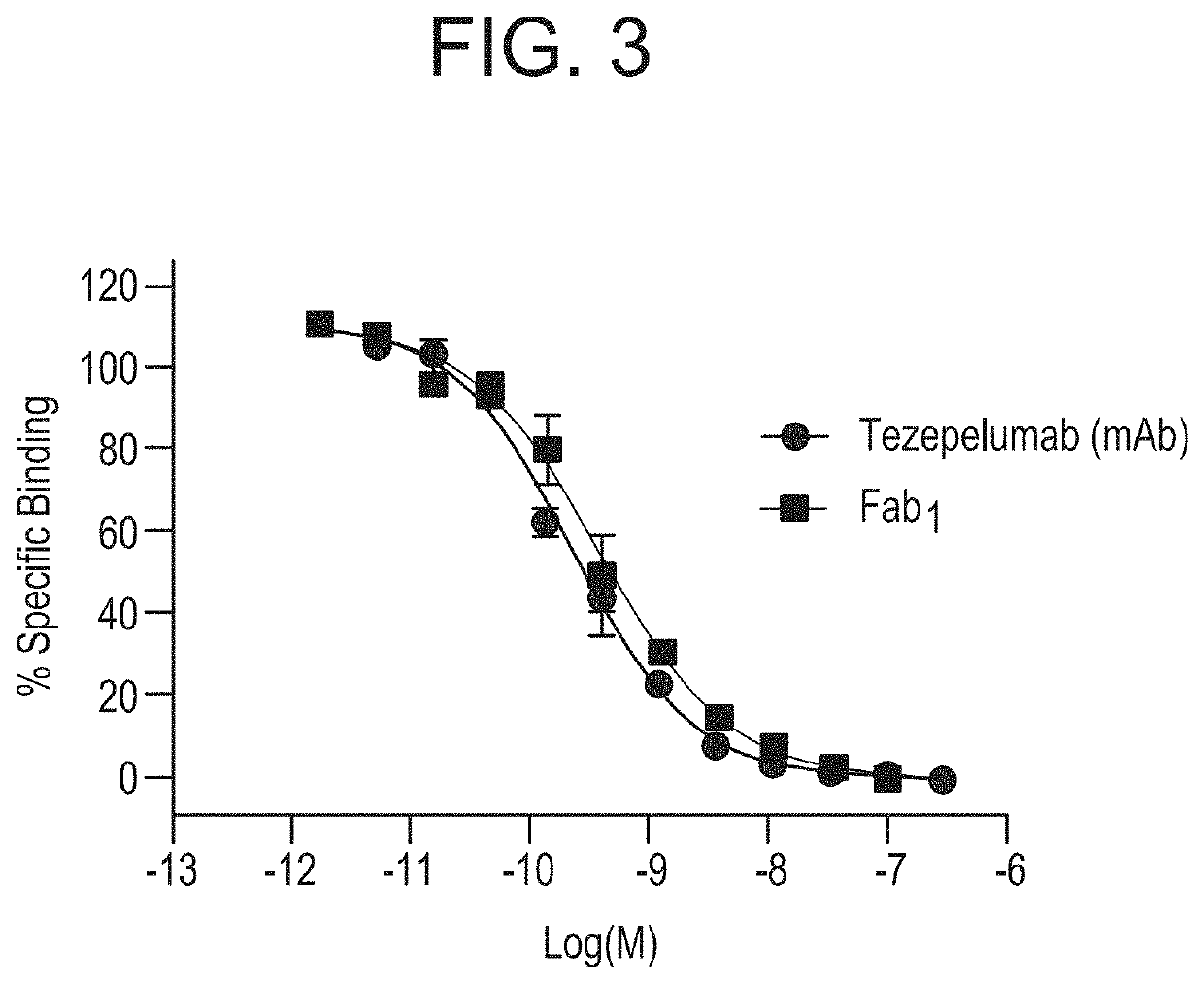Dry powder formulations of thymic stromal lymphopoietin (TSLP)-binding antibodies and methods of use thereof
a technology of thymic stromal lymphopoietin and antigen, which is applied in the field of dry powder formulations of antigen binding fragments, can solve the problems of serious burden on the health care system, on the society, and the loss of productivity at work
- Summary
- Abstract
- Description
- Claims
- Application Information
AI Technical Summary
Benefits of technology
Problems solved by technology
Method used
Image
Examples
example 1
n of Anti-TSLP FABS
[0216]A series of antibody binding fragments (Fab) derived from the anti-TSLP monoclonal antibody “A5” disclosed in WO 2009 / 035577, which is hereby incorporated by reference in its entirety, were generated using standard molecular biology and cloning techniques. In short, the CDR sequences of A5 were cloned into an IgG1 Fab scaffold, resulting in the Fab fragment herein referred to as Fab1 or Fab1. The VH and VL sequences of Fab1 are disclosed as SEQ ID NOs:4 and 8, respectively.
[0217]Variants Fab2-9 were also generated from Fab1 comprising mutations in CDR regions. The combination of VH and VL CDRs for each of Fabs1-9 are shown in Table 3.
TABLE 3CDR sequence of anti-TSLP Fabs1-9VH CDRs 1, 2 and 3VL CDRs 1, 2 and 3Fab1SEQ ID NOs: 1, 2 and 3SEQ ID NOs: 5, 6 and 7Fab2SEQ ID NOs: 1, 2 and 3SEQ ID NO: 11, 6 and 7Fab3SEQ ID NOs: 1, 2 and 3SEQ ID NO: 14, 6 and 7Fab4SEQ ID NO: 1, 15 and 3SEQ ID NOs: 5, 6 and 7Fab5SEQ ID NOs: 1, 17 and 3SEQ ID NOs: 5, 6 and 7Fab6SEQ ID NO...
example 3
Tezepelumab Bind to TSLP with Similar Binding Characteristics
[0229]The binding characteristics of Fab1 to hu TSLP were directly compared with tezepelumab. Tezepelumab is a human immunoglobulin G2 (lgG2) monoclonal antibody (mAb) that binds to TSLP, preventing its interaction with the TSLP receptor complex. A proof-of-concept study in patients with mild, atopic asthma, demonstrated that tezepelumab inhibited the early and late asthmatic response and suppressed biomarkers of Th2 inflammation following inhaled allergen challenge. Tezepelumab is currently being investigated in the clinic as a specialist care treatment for the treatment of severe asthma.
[0230]The in vitro binding potency of Fab1 was determined using a homogeneous fluorescence resonance energy transfer (FRET) Homogeneous Time-Resolved Fluorescence (HTRF®, Cisbio International) based TSLP: mAb-binding assay. Streptavidin cryptate was used for the detection of biotinylated TSLP. In brief, samples of unlabeled Fab1 were titr...
example 5
ng Maximum Tolerated Dose and Pharmacokinetics Following Fab1 Inhalation in Cynomolgus Monkeys
[0235]The objective of the study was to determine the maximum tolerated dose (MTD) or maximum feasible dose (MFD) and the pharmacokinetics (PK) of aerosolized Fab1 after inhalation exposure via face mask in Cynomolgus macaques.
[0236]Female cynomolgus monkeys received a single 8 min and 20 min inhalation of Fab1 (Groups 1 and 2, three animals per group). The doses delivered to the lung for Group 1 and 2 were 1 and 2 mg / kg based on 25% lung deposition. Group 3 was a repeat dose escalation. One female and one male cynomolgus monkeys were treated as follows: 8 min inhalation daily for the first 2 days, 20 min inhalation daily for 2 days, 60 min inhalation daily for 3 days. Serial blood samples were for collected for Fab1 serum PK and urea concentration. Bronchoalveolar lavage (BAL) samples were collected for Fab1 PK and urea concentration. The Epithelial lining fluid (ELF) was calculated from B...
PUM
| Property | Measurement | Unit |
|---|---|---|
| Fraction | aaaaa | aaaaa |
| Fraction | aaaaa | aaaaa |
| Fraction | aaaaa | aaaaa |
Abstract
Description
Claims
Application Information
 Login to View More
Login to View More - R&D
- Intellectual Property
- Life Sciences
- Materials
- Tech Scout
- Unparalleled Data Quality
- Higher Quality Content
- 60% Fewer Hallucinations
Browse by: Latest US Patents, China's latest patents, Technical Efficacy Thesaurus, Application Domain, Technology Topic, Popular Technical Reports.
© 2025 PatSnap. All rights reserved.Legal|Privacy policy|Modern Slavery Act Transparency Statement|Sitemap|About US| Contact US: help@patsnap.com



